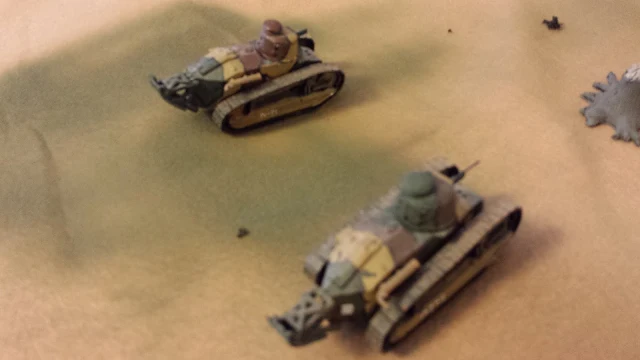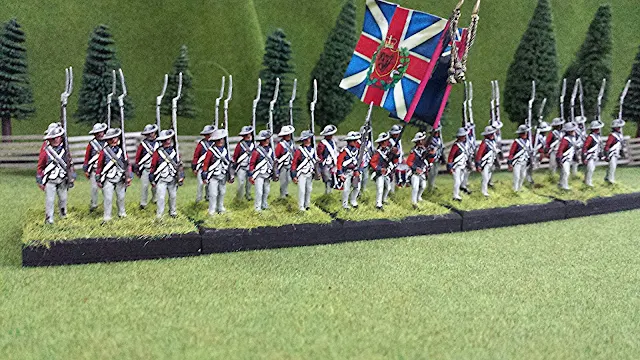Getting ready for my campaign, I have been fiendishly painting and finishing up my Rev War forces. Number one in my projects have been my loyalist forces. Often down played in the history books, the various loyalist forces (American Establishment, regulars, militia and refugees) played an incredible role in the south from 1779 to 1783. Yet, with little and often contradictory information out there they are a misunderstood organization and their uniforms poorly documented. Because of this there is not much historical documentation for my loyalist brigade, but lots of conjecture. Both of my regiments are long service veterans who are members diverge American Establishment. As one gamer said, they are more British then the British.
New York Volunteers
(3rd American regiment)
One of the very first loyalist fighting regiments. They served at Long Island although "dressed in rags." Sent south with Colonel Archibald Campbell in 1779 they fought in Georgia and South Carolina. After their defense of Rocky Mount their commander Turnball suggested they were given a standard.
My uniform is based on returns in 1782 which suggest they wore red coats faced blue. Prior to that it is very unclear and contradictory. As part of the American Establishment they received yearly clothing and equipment like British regular regiments from the same sources. So I have used regular British figures. The gray round hats is purely fantasy as I like the illustrations in Mollo and McGregor "Uniforms of the American Revolution." I can find no contemporary source for this and admit it is conjecture. But they were one of my favorite regiments of the period and I wanted to make them stand out.
Volunteers of Ireland
(2nd American regiment)
Here I have flown in the face of conventional wisdom and interpret the volunteer differently. Most modern depictions suggest the Volunteer of Ireland look like this Trioni illustrations .
This is how the perry brothers have modeled them. I believe this is due to two items. One a contemporary return suggesting caps trimmed silver for sergeants in 1782. The other is a engraving of Rawdon with a possible drawing of some of his soldiers. Here is the drawing:
While these interpretation might be true I am not sure. The coat and illustrations of Rawson were done after this time period. The illustrations of the soldiers suggest almost grenadier miters caps not the low light infantry type cap. I can find no returns before 1780 for the coats suggested. In fact returns from 1780 and before suggest regular uniforms and equipment issued. As to the caps were they for the Light company?
So I have painted my version of the Volunteers of Ireland in red coats faced green and given them round hats (much more comfortable in the heat of the south and better documented).
Again, I am saying this is my interpretation. It is not more right or wrong then what others have done. It is my interpretation based on the evidence I look at. As with so much in history please read your source material and draw your opinion.





















